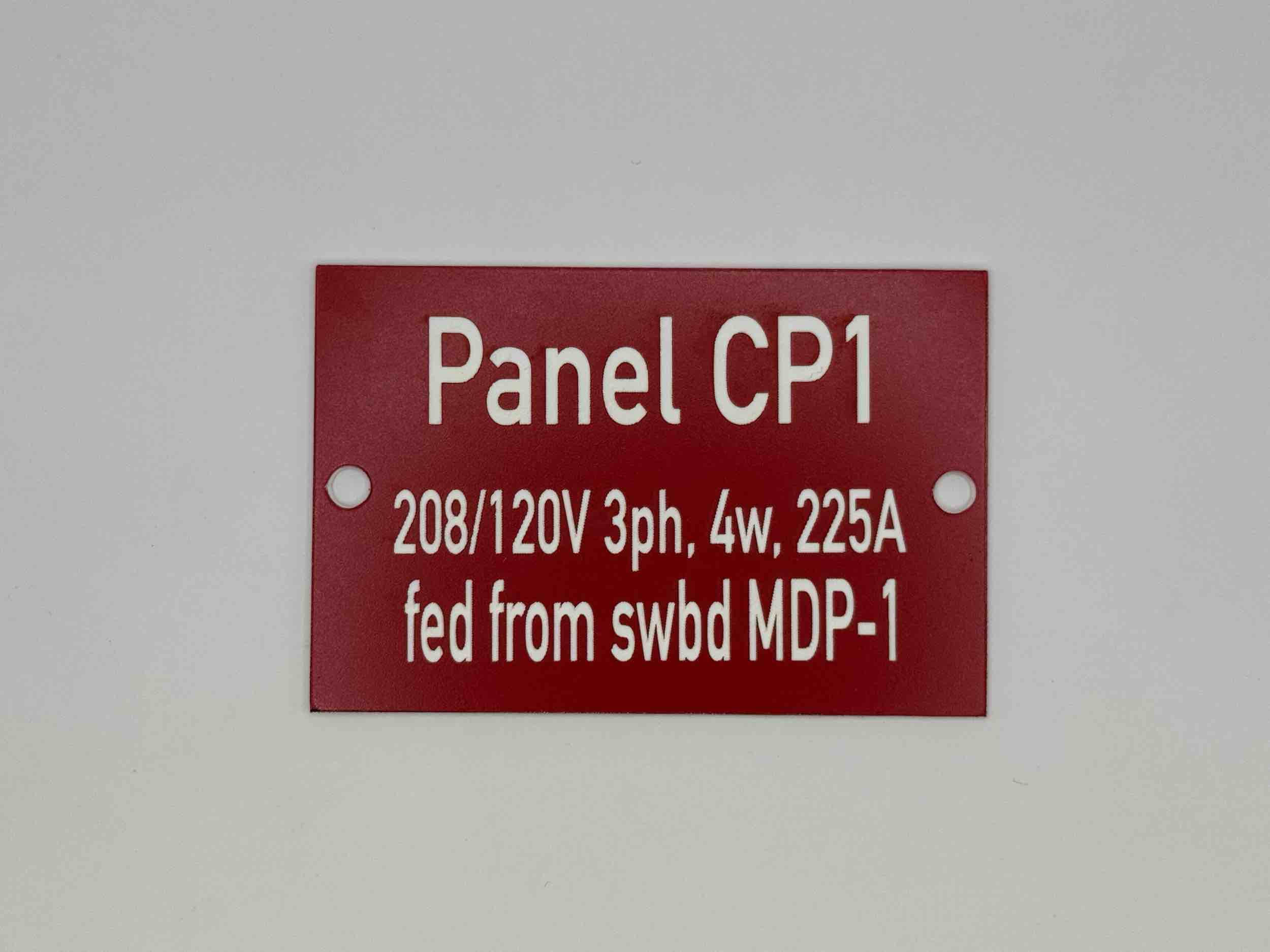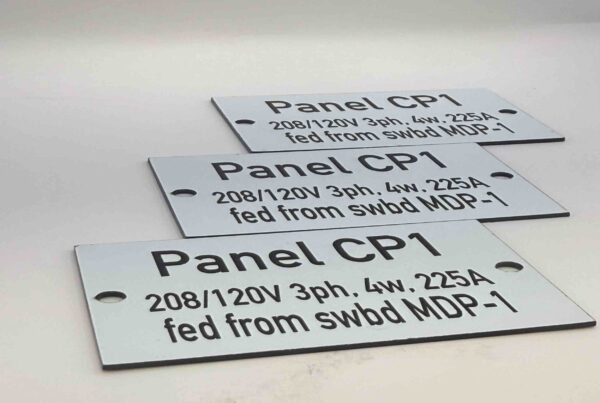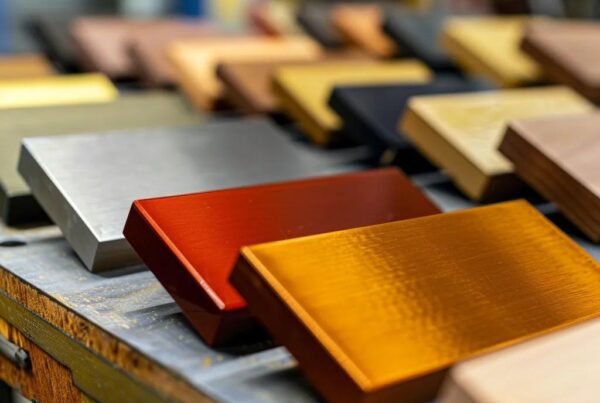Comparing Lifespan: Phenolic Plastic Nameplates vs. Traditional Plastic Versions – What You Need to Know
A deteriorating nameplate can undermine equipment identification, safety compliance and brand integrity in industrial environments. Understanding the lifespan of phenolic plastic nameplates versus traditional thermoplastic versions is vital for selecting durable identification solutions. This guide examines phenolic resin’s thermoset structure, resistance to heat, chemicals and abrasion, and compares it with acrylic, HDPE, ABS, PTFE and nylon options under UV exposure, mechanical stress and harsh chemicals. Maintenance best practices from Freedom Cleaning Solutions demonstrate how proper care extends nameplate longevity. You will discover material properties, lifespan comparisons, cost-benefit insights, application recommendations and engraving durability to make informed choices.
What Is Phenolic Plastic and What Are Its Key Properties?
Phenolic plastic is a thermoset polymer formed by curing phenol-formaldehyde resin, offering high heat resistance, chemical stability and excellent electrical insulation. Its cross-linked molecular network prevents melting under load, making it indispensable in heavy-duty identification. For example, switchgear panels rely on phenolic tags for decades of legible performance.
Below is a structured overview of phenolic plastic’s core attributes:
Phenolic plastic’s combination of thermal stability and chemical inertness establishes the foundation for its lifespan advantages over conventional thermoplastics.
Phenolic Plastic Properties
Phenolic plastic, a thermoset polymer, is known for its high heat resistance, chemical stability, and excellent electrical insulation, making it suitable for demanding industrial applications. Its cross-linked molecular structure prevents melting under load, ensuring durability in harsh environments.
This source provides foundational information about the material properties of phenolic plastic, which is central to the article’s comparison of nameplate materials.
What Makes Phenolic Plastic a Thermoset Material?
A thermoset plastic like phenolic cures through a cross-linking reaction that forms irreversible bonds, preventing remelting when reheated. This mechanism yields a rigid, three-dimensional network that maintains shape and performance under sustained high temperatures. Understanding this cross-linked structure guides why phenolic plates resist deformation where thermoplastics soften.
How Does Phenolic Plastic Perform in Heat and Chemical Resistance?
Phenolic nameplates deliver superior heat tolerance and chemical stability by integrating phenolic resin with reinforcing fillers. They withstand continuous exposure to elevated temperatures and resist attack by industrial solvents, acids and alkaline cleaners. This performance ensures marking clarity amid harsh cleaning protocols, supporting long-term identification even under aggressive maintenance regimes.
What Environmental Factors Affect Phenolic Plastic Lifespan?
Phenolic nameplate longevity depends on UV exposure, surface abrasion and moisture cycling. Although inherently UV-stable, prolonged sun exposure can lead to surface darkening over many years. Abrasion from contact or cleaning pads may lightly scuff the surface but rarely compromise legibility. Controlled indoor settings extend phenolic lifespan beyond 20 years, while outdoor applications average 10–15 years of maintenance-friendly durability.
What Are Common Applications for Phenolic Plastic Nameplates?
Phenolic tags are widely used in industrial, electrical and high-temperature environments due to their robust properties. Typical use cases include:
- Machine control panels and switchgear identification
- Laboratory equipment labels exposed to corrosive chemicals
- Engine and motor housing tags operating above 100 °C
This versatility makes phenolic plastic the material of choice where reliability and safety markings cannot be compromised.
What Are Traditional Plastics Used for Nameplates and Their Durability?
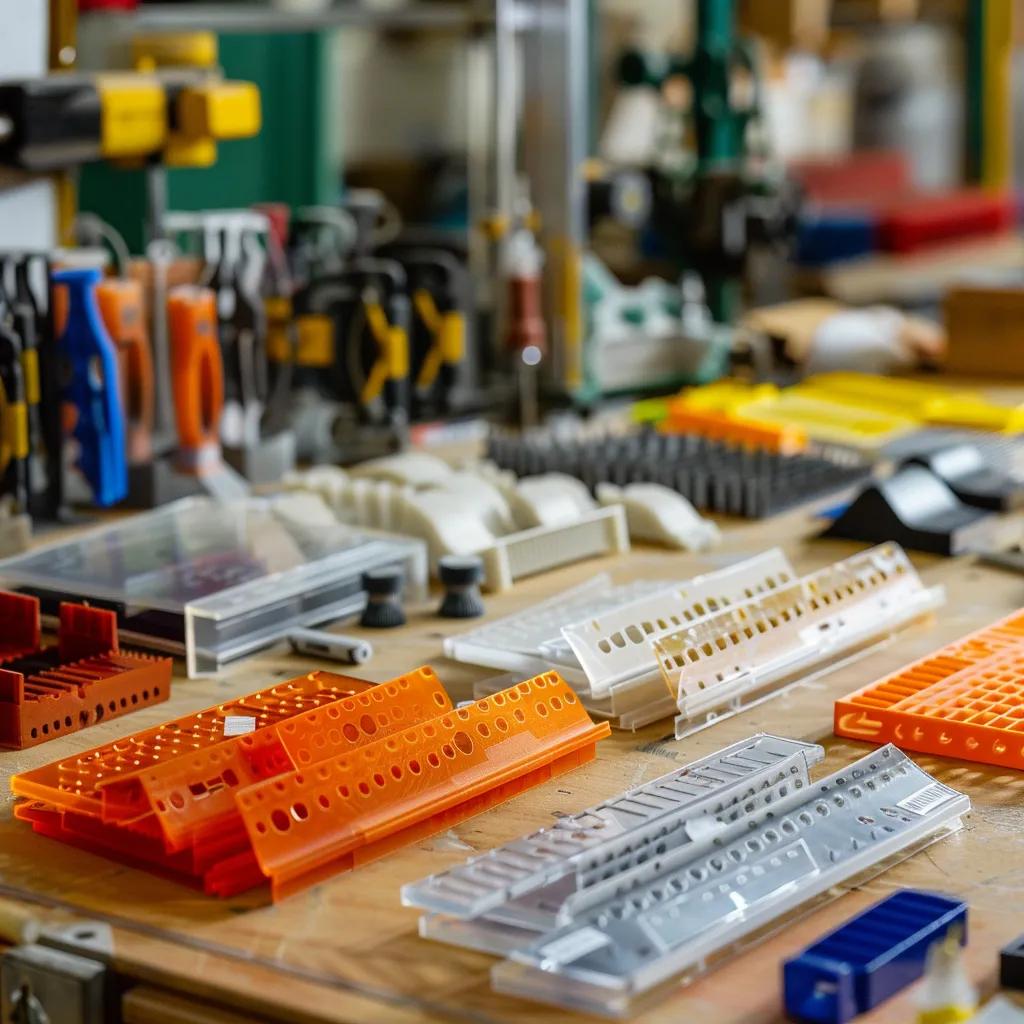
Traditional plastic nameplates encompass thermoplastics such as acrylic, HDPE, ABS, PTFE and nylon. Each material offers a unique balance of clarity, impact strength and chemical resistance but softens under heat and may degrade under UV or aggressive solvents. Understanding these limitations clarifies why phenolic often outperforms thermoplastics in demanding environments.
Below is a comparative table of common thermoplastics:
These thermoplastics serve well in moderate-duty applications but require careful selection and maintenance to maximize durability.
How Durable Are Acrylic Nameplates and What Are Their Limitations?
Acrylic plates provide crystal-clear identification and good UV resistance, making them ideal for indoor signage and office nameplates. However, they scratch easily under abrasive cleaning and soften above 70 °C. Over time, persistent abrasion and sunlight can lead to surface hazing and reduced legibility, limiting outdoor and high-heat applications.
What Are the Properties of HDPE and ABS for Nameplate Use?
HDPE offers high impact strength and excellent chemical resistance, tolerating detergents and oils common in cleaning routines. ABS provides good toughness and a smooth finish but has a moderate heat deflection temperature around 80 °C. Both materials remain thermoplastic, so they soften under prolonged heat and may warp if exposed to high-temperature cleaning processes.
How Do PTFE and Nylon Nameplates Perform in Specialized Environments?
PTFE nameplates deliver outstanding chemical inertness and a low-friction surface that resists fouling, ideal for chemical-processing facilities. Nylon plates exhibit high abrasion resistance but absorb moisture (~ 1–2 %), which can cause dimensional changes in humid conditions. These specialized plastics suit niche environments but monitor moisture and temperature effects for long-term stability.
What Environmental Factors Influence Traditional Plastic Lifespan?
Thermoplastic durability is influenced by UV radiation, temperature cycling, chemical exposure and mechanical wear. UV can cause chain scission in acrylic, leading to yellowing; heat softens HDPE and ABS while moisture induces nylon swelling. Aggressive solvents or cleaners may attack surface finishes, requiring protective coatings or periodic replacement to maintain legibility.
How Do Phenolic Plastic Nameplates Compare to Traditional Plastics in Lifespan?
Phenolic and traditional plastics differ markedly in lifespan when exposed to UV, heat, chemicals and mechanical stress. Below is a side-by-side lifespan comparison under common aging factors:
Lifespan Comparison of Nameplate Materials
The lifespan of nameplates made from phenolic plastic is significantly longer than those made from traditional thermoplastics like acrylic, HDPE, and ABS, especially when exposed to UV radiation, heat, chemicals, and mechanical stress. Phenolic nameplates can last over 20 years in certain conditions, while thermoplastics degrade more quickly.
This citation supports the article’s core comparison of material lifespans under various environmental conditions, highlighting the advantages of phenolic plastic.
What Is the Lifespan of Phenolic vs. Acrylic, HDPE, ABS Under UV Exposure?
Phenolic plates maintain legibility under direct sunlight for 10–15 years with minimal color shift, whereas acrylic nameplates begin to yellow after 5–8 years. HDPE and ABS degrade faster in UV, averaging 3–6 years before cracking or embrittlement appears. PTFE and nylon fare similarly to HDPE when unprotected.
How Do Heat and Chemical Resistance Affect Nameplate Longevity?
Heat-resistant phenolic can withstand repeated exposure to 100–150 °C for decades without structural damage. Thermoplastics soften near their glass transition temperatures (70–80 °C for acrylic and ABS), accelerating wear under hot cleaning cycles. Chemical-resistant HDPE and PTFE last longer in solvent-rich environments, but only phenolic combines thermal and chemical resilience at industrial levels.
What Are the Abrasion and Impact Resistance Differences?
Phenolic’s rigid, cross-linked structure delivers good scratch resistance and impact durability, enabling lifespans up to 20 years in high-traffic zones. Acrylic and ABS plates may crack or scratch within 5 years under mechanical contact. HDPE and nylon resist impact better but show surface abrasion over time, while PTFE remains low-friction yet softer under load.
How Does Cost Influence Material Choice for Nameplates?
Phenolic plastic commands a premium due to resin and processing costs but offers lower total cost of ownership via extended replacement intervals. Acrylic and ABS are more affordable initially, yet require frequent replacement in harsh settings. HDPE and nylon occupy a mid-range cost bracket, balancing upfront savings with moderate lifespan.
How Suitable Are Different Plastics for Engraving and Marking Longevity?
Engraving on phenolic produces crisp, fade-resistant markings that endure harsh cleaning chemicals. Traditional plastics accept laser or mechanical engraving but may exhibit edge melting or chipping. For custom laser-engraved phenolic tags, see this resource. In general, phenolic engraving retains clarity for over 15 years, whereas acrylic fades or abrades within 5–10 years.
What Factors Influence the Longevity of Plastic Nameplates?
Several environmental and usage factors determine how long any plastic nameplate remains effective. UV radiation, weather conditions, chemical exposure, mechanical stress and maintenance practices collectively shape overall lifespan.
How Do UV Radiation and Weather Conditions Affect Plastic Durability?
UV radiation breaks polymer chains in thermoplastics, causing yellowing, embrittlement and cracking over time. Phenolic resins resist UV-induced degradation better but may darken slightly. Rain, humidity and freeze-thaw cycles can exacerbate moisture absorption in nylon and induce warping in HDPE, while phenolic remains dimensionally stable under the same conditions.
What Role Does Chemical Exposure Play in Nameplate Degradation?
Strong acids, caustic cleaners and solvents attack thermoplastic surfaces, eroding protective finishes and causing surface pitting. Phenolic plates resist a broader range of industrial chemicals, preserving marking integrity where traditional plastics require protective coatings or sacrificial replacements.
How Does Mechanical Stress and Installation Impact Lifespan?
Improper mounting can stress nameplates at edges, leading to cracking in brittle plastics like acrylic and ABS. Abrasive cleaning pads or high-pressure washing can scratch surfaces, accelerating wear. Phenolic’s toughness absorbs installation and cleaning stresses, reducing the risk of damage from mechanical overload.
What Maintenance Practices Extend Nameplate Lifespan?
Regular cleaning with non-abrasive, neutral-pH solutions prevents buildup of dirt and chemicals that accelerate polymer breakdown. Inspecting mounting hardware for corrosion and ensuring proper tension avoids edge stress. Freedom Cleaning Solutions recommends scheduled wipe-downs and gentle microfiber pads to preserve nameplate appearance and functionality for years.
Which Nameplate Materials Are Best for Specific Industrial Applications?
Selecting the right nameplate material requires matching properties to environmental demands—temperature, chemical exposure, UV intensity and budget constraints drive optimal choices.
What Are the Ideal Plastics for High-Temperature and Electrical Environments?
Phenolic plastic’s thermoset structure and high dielectric strength make it ideal for switchgear panels, control stations and motor housing tags in electrical cabinets. Its continuous service temperature up to 150 °C ensures marking stability near heat-producing equipment.
Which Plastics Are Recommended for Outdoor and UV-Exposed Signage?
Acrylic and UV-stabilized polycarbonates excel in outdoor signage where clarity and color retention matter more than extreme heat resistance. Acrylic’s high transparency and weatherproof coatings deliver up to 8 years of vibrant legibility under sunlight.
What Materials Are Preferred for Chemical-Intensive Industrial Settings?
HDPE and PTFE are top choices where aggressive solvents, acids or alkalis are routinely encountered. Their chemical inertness prevents surface attack, while phenolic remains a strong alternative for combined chemical and heat exposure.
How to Choose Nameplate Materials Based on Budget and Performance Needs?
A decision framework helps balance initial costs against replacement frequency:
- Assess Environment – Identify heat, UV and chemical demands
- Rank Properties – Prioritize resistance attributes (heat > UV > chemicals)
- Compare Costs – Evaluate material and processing expenses
- Estimate Lifespan – Project replacement intervals and total cost of ownership
This structured approach ensures a cost-effective and durable identification solution.
How Does Engraving Affect the Durability of Phenolic and Traditional Plastic Nameplates?
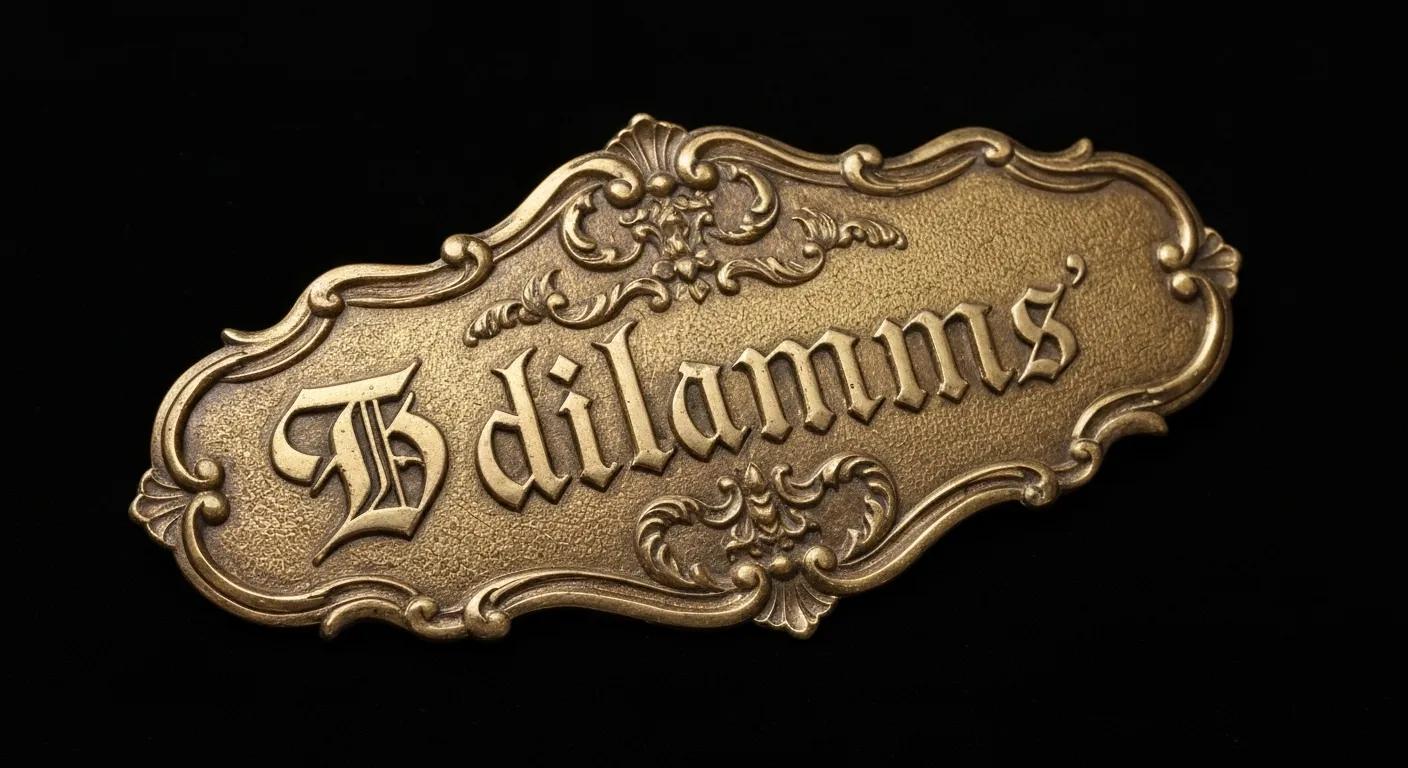
Engraving methods and substrate compatibility determine how well markings resist fading, chipping and chemical exposure over time.
What Engraving Methods Are Compatible with Phenolic Plastic?
Laser engraving and mechanical routing both yield sharp, permanent marks on phenolic plastics. Laser systems vaporize surface resin to reveal contrasting layers, while rotary tools carve indelible grooves. Both methods preserve clarity under industrial cleaning cycles.
How Does Engraving Longevity Differ Between Acrylic and Other Thermoplastics?
Engraved acrylic signs can exhibit heat-affected edges and micro-cracks that trap contaminants, reducing clarity over time. PTFE and nylon accept engraving with minimal chemical reaction, but surface abrasion can dull edges. Phenolic engraving remains crisp and chemical-resistant for the longest duration.
What Are Best Practices for Maintaining Engraved Nameplates?
Clean engraved plates with neutral-pH detergents and soft brushes to remove residues from engraving channels. Avoid abrasive solvents and high-pressure washes that can erode fine details. Applying a thin protective sealant prolongs marker visibility in corrosive environments.
What Are Common Questions About Phenolic vs. Traditional Plastic Nameplates?
Many industrial specifiers ask whether thermoset phenolic truly outlasts thermoplastics, if phenolic is waterproof, and how engraving holds up outdoors. Common concerns include initial cost differences, replacement schedules and maintenance demands. Phenolic’s superior thermal, chemical and abrasion resistance typically outweighs its higher upfront cost by reducing replacement frequency and maintenance labor.
What Are the Latest Trends and Innovations in Plastic Nameplate Materials?
Material science continues to advance nameplate durability through improved formulations, manufacturing and standards that push performance boundaries.
How Are New Plastic Formulations Improving Durability?
Novel thermoplastic blends incorporating UV stabilizers, nano-fillers and anti-scratch coatings extend acrylic and nylon lifespans. Enhanced phenolic variants integrate reinforcing fibers to boost impact strength and abrasion resistance without sacrificing heat tolerance.
What Manufacturing Innovations Affect Nameplate Longevity?
Laser marking technologies with adjustable wavelengths optimize contrast on diverse plastics, reducing thermal damage. Advanced molding techniques produce multi-layered plates with embedded color cores for deeper engraving contrast and longer-lasting legibility.
How Are Industry Standards Influencing Material Selection?
Updated ASTM and ISO testing protocols for UV aging, chemical resistance and mechanical stress provide more accurate lifespan predictions. Specifiers rely on standardized data sheets to compare materials under equivalent testing conditions.
What Are Emerging Applications for Phenolic and Traditional Plastic Nameplates?
Growth in IoT and smart factory labeling drives demand for nameplates with embedded QR codes and RFID integration. Phenolic substrates pair well with embedded electronics in high-heat machinery, while flexible thermoplastics support curved surfaces and dynamic signage in retail and transportation.
Phenolic and thermoplastic nameplates each offer distinct advantages. Phenolic plastic nameplates deliver unmatched heat, chemical and abrasion resistance for long-term industrial identification, while traditional plastics like acrylic, HDPE, ABS, PTFE and nylon serve cost-sensitive or moderate-duty use cases. By aligning material properties with environmental demands, maintenance protocols from Freedom Cleaning Solutions and strategic engraving choices, owners ensure clear, durable marking solutions that span years of reliable service.

